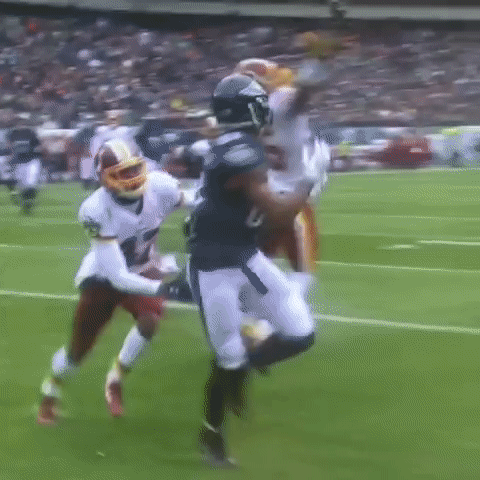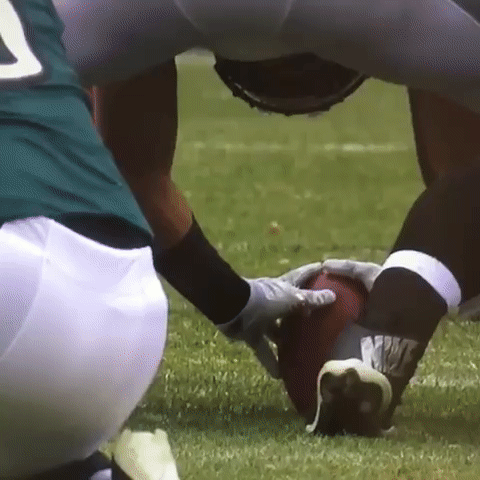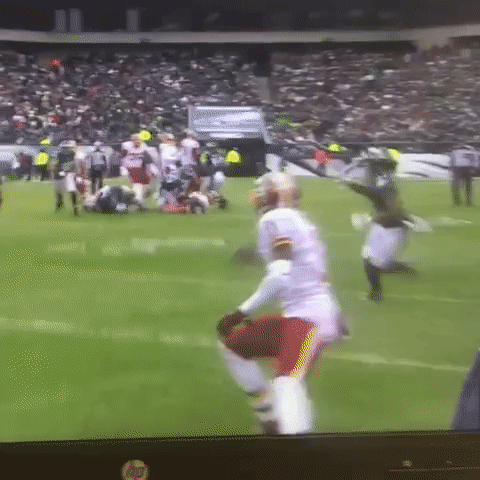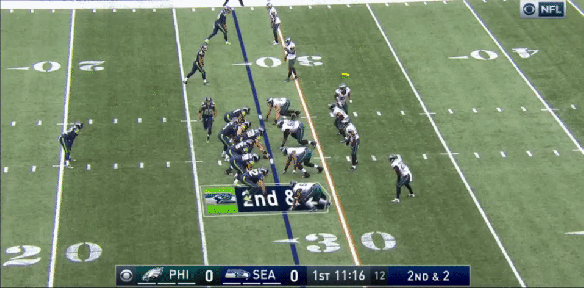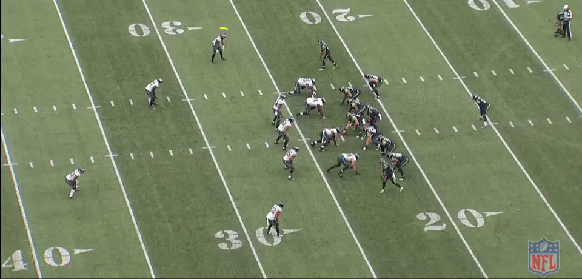Patrick Causey, on Twitter @pcausey3
Last offseason, the Eagles took a kitchen sink approach to the quarterback position: signing Sam Bradford to a contract extension, signing Chase Daniel in free agency, and trading significant draft picks to move up in the draft and acquire Carson Wentz. In a league where the haves and have-nots are usually separated by who is manning the quarterback position, it seemed like a sensible, if not costly, approach.
The Eagles were able to capitalize on this investment to an extent. As I detailed last week, trading Bradford helped offset some of the lost draft capital used to acquire Wentz. The Eagles also got off the hook for a significant portion of the $18 million salary that Bradford is slated to make next season, which should come in handy when trying to re-sign their own players (cough, Bennie Logan) or upgrade the receiver position in free agency (cough, DeSean Jackson).
But the Eagles situation at quarterback, at least as it relates to the cap, isn’t as good as it could be. One of the chief benefits of starting a quarterback on his rookie deal is that you are getting him at well-below market value, which frees up money for improving the rest of the roster. The Seahawks were able to win a Super Bowl thanks, in part, to being able to retain some of their best defensive players while Russell Wilson was making a paltry $500,000 a year.
But based on the Eagles moves last year, they won’t get to take advantage of having Wentz on his rookie deal until 2018. Let me explain.
For starters, by trading Sam Bradford after June 1st, the Eagles are required to carry $5.5 million of Bradford’s remaining bonus to next season. (Note, if you don’t want to read the explanation about the CBA’s rules, skip these next two paragraphs). Under the CBA, the NFL uses June 1 as a deadline for how unpaid portions of a player’s bonus is treated under the salary cap. It’s essentially a rule of accounting. When a player is removed from a roster prior to June 1st — whether via trade or being released — all of his remaining unamortized bonus money immediately accelerates onto the salary cap of that season. If a player is traded or released after June 1st, like Sam Bradford (who was traded on September 3rd), only his current year’s salary and bonus remains on the cap; the balance of the bonus money accelerates onto the next year’s cap.
Taking this out of the abstract, Bradford had $11 million remaining on his bonus entering the 2016 season. $5.5 million of that bonus was paid to Bradford before he was traded and remained on the Eagles salary in 2016. However, because Bradford was traded after that June 1st cutoff, the remaining $5.5 million is on the Eagles books for year.
The Eagles also invested big in Chase Daniel, making him the highest paid backup quarterback in the NFL (he’s technically the second highest paid behind Tony Romo, who was relegated to backup duty after a broken back helped pave the way for Dak Prescott to become the starter). Daniel has an $8 million salary cap hit next season, $7 million of which is dead money. So there’s a snowballs chance in hell they are cutting him.
Add in Carson Wentz’s $6 million salary next season, and the Eagles will have $19.5 million in salary cap allocated to the quarterback position for 2017. According to OvertheCap.com, only 12 quarterbacks make more on a per-year basis.
So, was the Eagles approach the correct one?
One the one hand, if the Eagles didn’t have to account for Bradford’s or Daniel’s contracts, they would have an extra $13.5 million in cap space. That money would certainly come in handy given the significant holes on this roster at running back, wide receiver and cornerback.
But on the other hand, if the Eagles never re-signed Bradford, they wouldn’t have a 1st round pick this year or an extra 4th round pick next year. So I don’t necessarily disagree with the decision to re-sign Bradford (although part of that is admittedly based on the outcome of being able to trade him for a 1st and a 4th; had that trade not been made, we might be having a different discussion).
What about Daniel? On the one hand, $8 million seems like a grossly excessive amount to pay Daniel, especially given what we know about Wentz today. But on the other hand, the Eagles didn’t (a) have any idea that Wentz was going to be ready to play when they signed Daniel, and (b) we can’t discount the positive impact Daniel has had on Wentz’s development.
Consider this story from ESPN.com back in September, which discussed how Daniel was able to get Wentz to approach preparing for a game the same way Daniel was taught to prepare by Drew Brees in New Orleans:
“It honestly started my rookie year,” Daniel remembers. “Drew was like, ‘Hey, we’re going to be here at 5:30 in the morning, and this is what we’re going to watch on Wednesdays, this is what we’re going to watch on Thursdays, this is what we’re going to watch on Fridays.’ And I was like, ‘OK. Yes, absolutely. I’ll do whatever you say.’ I’m a rookie, he’s throwing for 5,000 yards a season.
“As time progressed there, we sort of got into a routine. I have two pages of notes on the schedule of exactly what we’re supposed to do, and I sort of brought that to Kansas City with us. Alex [Smith] really loved it, felt he was really prepared and that’s sort of what I’ve tried to bring here with Carson.”
Daniel didn’t reveal everything about the blueprint, but did share some details. First, the quarterbacks are in the film room, clicker in hand, at 5:30 a.m. During the heavy days of prep, they remain in the building until about 7 or 7:30 at night. The “day off” — Tuesday — is a six or seven-hour day, as the quarterbacks get a head start on the film.
“We’re always staying one day ahead of the team. [Thursday], we put base behind us and we started on third down. [Friday], we put third down behind us and we get started on red zone. We’re always staying one step ahead and we’re always going back and checking, ‘OK, here’s the base plan.’ We have this schedule where it just fits. It works well for the mental reps and the mental side of things and so far Carson likes it, he enjoys it.”
Is that worth $8 million next year? It’s hard to quantify. Odds are the answer is likely no — they likely could have paid him slightly less and still got the same benefit.
But at the end of the day, we are really only talking about a few million dollars. And since the Eagles will only be on the hook for Wentz’s $7.2 million in 2018 (the Eagles would save $7 million by releasing Daniel, so he is certainly gone after next season), this isn’t a problem that will hamper the Eagles long-term.
Bottom line: the Eagles won’t have the same cap flexibility that other teams have when starting a quarterback on a rookie contract. But given the circumstances, it isn’t as big of a problem as it seems at first blush.


